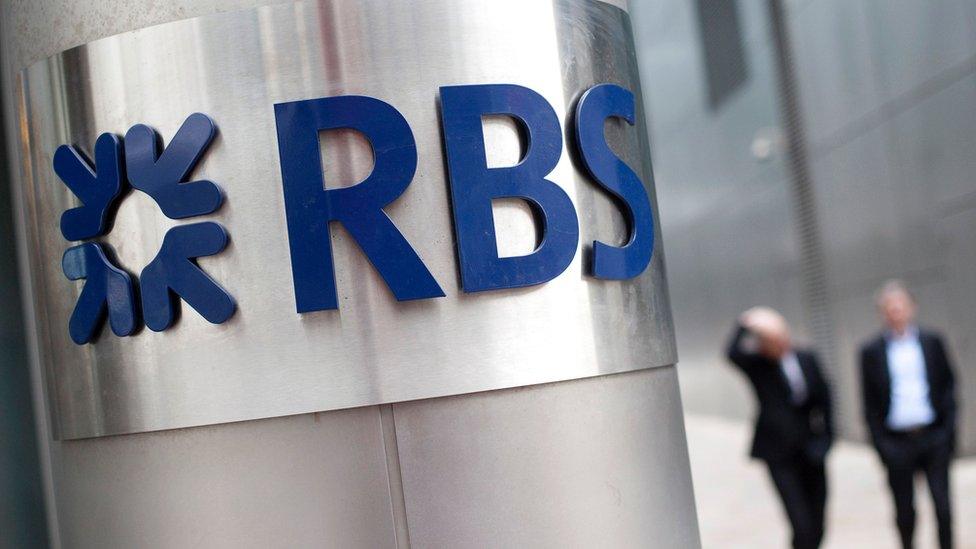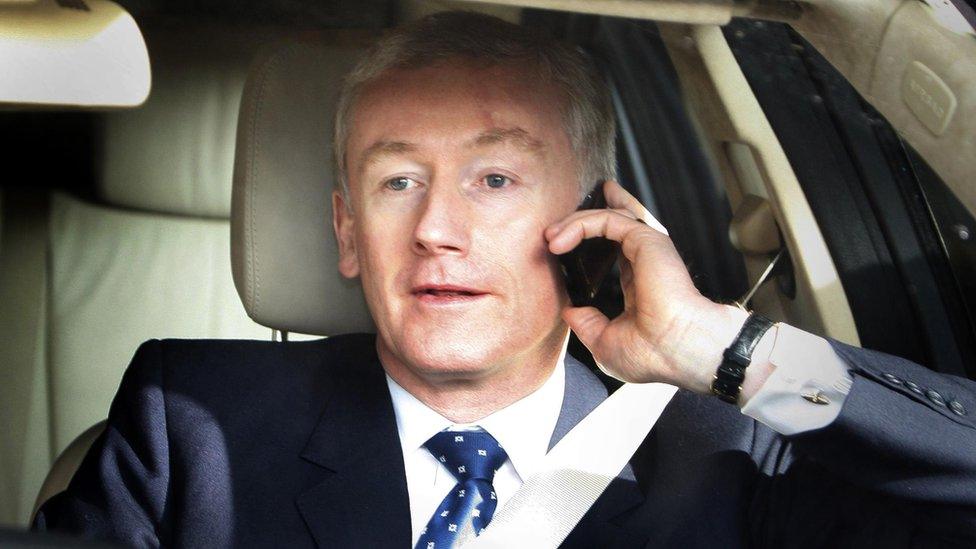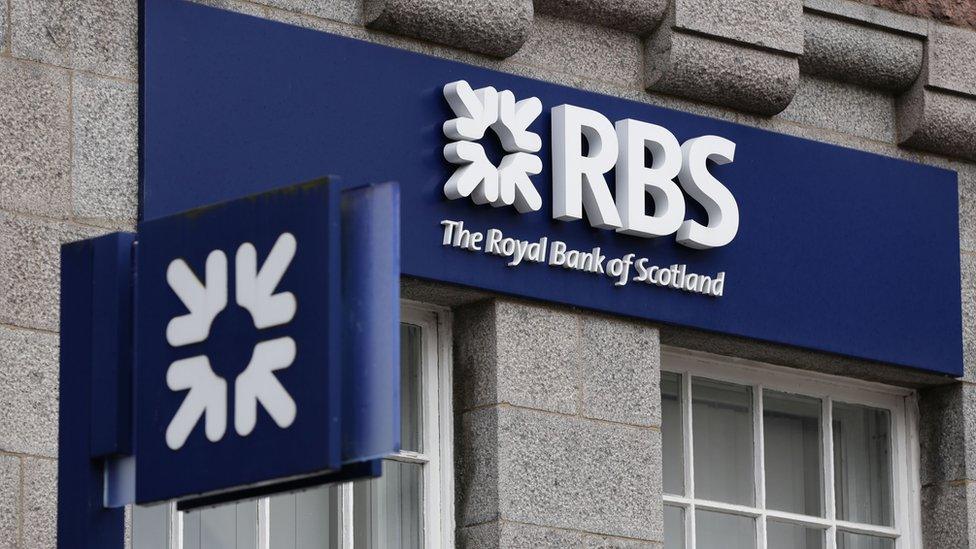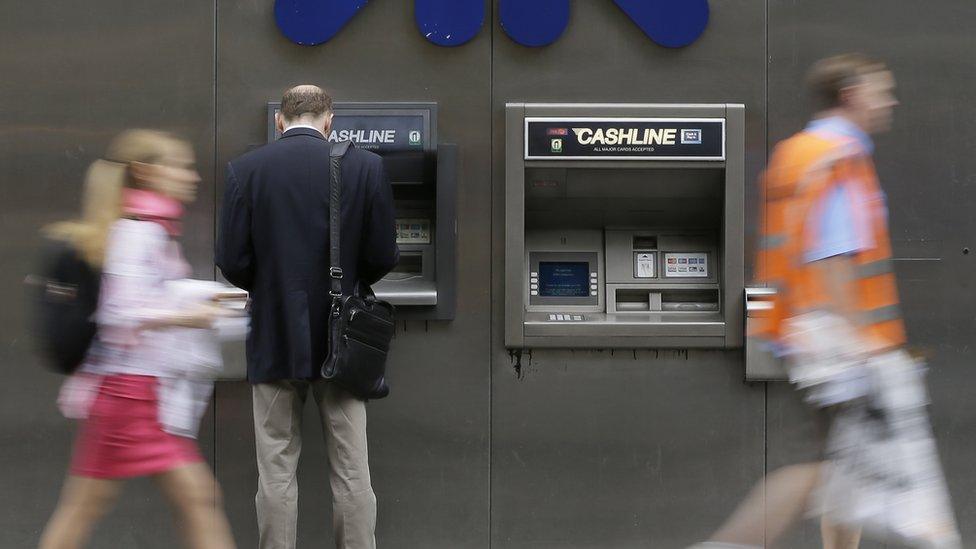Rebooting banks: challengers and challenging software
- Published

Royal Bank of Scotland has been eye-balling its shareholders at the annual general meeting in Edinburgh, with a warning that the legacy of its misdeeds requires yet more clearing up.
Maybe next year could see things turn sort of normal.
There's always next year.
To hasten the process, chief executive Ross McEwan told reporters at the meeting that he is considering an out-of-court settlement with shareholders who are suing the bank over Fred Goodwin's £12bn rights issue eight years ago.
That was - as few could forget - a few months before RBS had to be bailed out.
The New Zealander is also focusing his attention on the ratio of costs to income.
The legacy of being the world's biggest bank carries a high level of cost which, if not fixed, at least requires a lot of dislodging.
Now largely a UK and Ireland bank, RBS aims to grow some business and shrink others so that its UK clients represent 90% of its business.
In 2015, operating costs were 72% of income. "That's simply too high" said the chief. "My intention is to get the cost base properly aligned to the bank we are becoming, not the global bank we once were.
"And we are making real progress in becoming simpler. Over the last two years we have closed one in three of our registered companies, approaching one in four of our London properties, and one in five of the products we had on sale."

Shareholders have been suing RBS over Fred Goodwin's rights issue
McEwan said there are £800m of cost cuts targeted this year, most of that as it closes international operations, with £150m of it from the core.
If the 72% figure seems high, KPMG consultancy has produced a helpful guide to the scale of the industry's high cost base, particularly as it forks out vast amounts to compensate customers for mis-selling and market rigging.
Including that, the high street's big five have an combined cost-to-income ratio of 81%. Without the costs of misconduct, it's 63%.
And that's one factor that ought to encourage challenger banks, which don't carry the same legacy and can be more nimble with their costs.
The state of these upstart challengers to RBS, Lloyds, Barclays, HSBC and Santander is the subject of the KPMG report. It contrasts a modest growth in profits for the smaller fry last year with billions less for the big fish.
Measured by lending assets, the smaller challenger banks saw a 48% increase last year, with larger challengers at 11% and a reduction of 5% by the big five.
Larger challenger banks had a cost-to-income ratio of 59% last year, the smaller, nimble ones only 49%.
Big bank bashing
Partly, this is down to having much less of a branch network, or none at all.
The bigger challengers are led by Clydesdale Bank, with its Yorkshire Bank brand, and not without its own redress costs. It was, incidentally, cited this week as having the same scale of mortgage book as the British Bank of Mum and Dad.
Also in there, according to KPMG, are Handelsbanken UK, Paragon, and Virgin Money. TSB and Williams & Glyn also count, as spin-outs from Lloyds and RBS, forced on the bigger banks by European Commission regulators as a condition of state bail-outs.
The smaller challengers include AIB (UK), Aldermore, Close Brothers, Metro, One-Savnigs, Shawbrook and Secure Trust.
If you haven't heard much about them, that's because they're exploiting niches. And you probably aren't that niche.

Smaller competitors do not have the high costs associated with a big branch network
KPMG reckons that such challengers are finding it tougher going, as government and regulator cool their enthusiasm for both big-bank-bashing and for encouraging more competition.
Putting the brakes on the buy-to-let mortgage market is not seen as a friendly move by any of these banks. The new surcharge tax on profits is going to hurt them all. "Goodwill towards challengers is waning," we're told.
Katherine Burnet head of financial services for KPMG in Scotland, went on to say: "Small challengers and digital-only banks are building a personalised, transparent and data-rich banking environment, completely free from the restrictions of legacy systems and culture.
"But in a market where customer inertia is one of the most powerful forces, will they be different enough to reach scale?"
Fintech upgrade
That scale factor is a big obstacle for new challengers. The regulator needs to see the colour of your capital reserves before you get a licence. And fintech, or financial information technology, is a big challenge.

A software platform with the security required for banking has to be very robust, and that costs a lot. RBS recently announced that it's long-running attempt to spin off Williams & Glyn has been further delayed, with costs rising.
By this time last year, RBS was telling the market that the cost of the split was more than £1.5bn, much of that the price of disentangling IT. Lloyds got TSB off its books much faster, by leasing its software platform.
The Royal Bank also has costly experience of software when it goes wrong. Being unable to process transactions means it goes really wrong. And as RBS found in 2012 and again last June, the regulator is on the case of such outages.
Ten months ago, the boss of the British Banking Association admitted it was unacceptable: "A lot of banks have creaking IT systems. They are spending £3bn a year upgrading their IT systems. It is one of the biggest IT upgrades that Britain has ever seen."